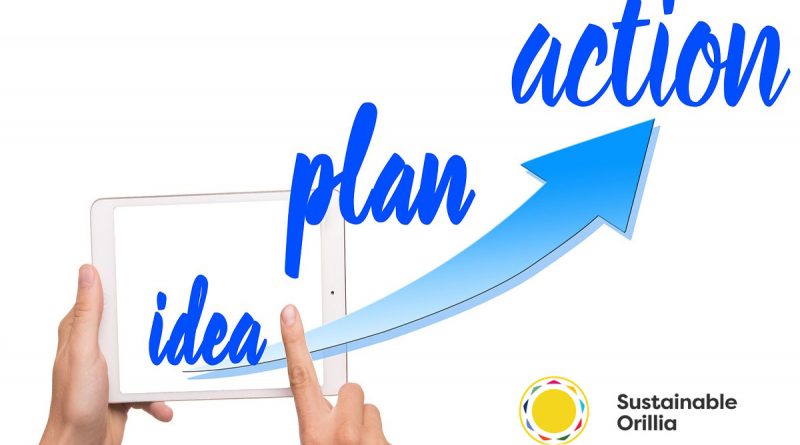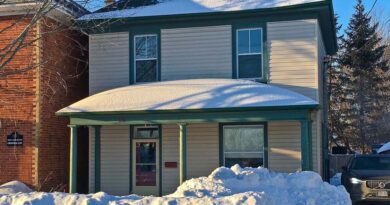Sustainable Orillia’s Tip Of The Week

Newest tips on top, check in every Saturday morning for new tips. If you have an idea to reduce waste, treat the environment better, or reduce carbon footprint that works, send it to Info@sustainableorillia.ca with the subject line: I've Got A Tip.
DO YOU REALLY NEED A CLOTHES DRYER?
Automatic clothes dryers account for a lot of electricity use in an average household – more than your clothes washer, fridge and TV combined.
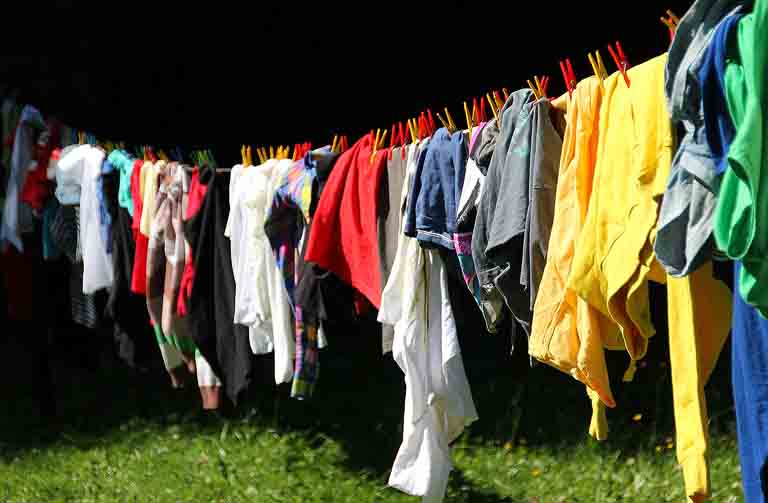
Clothesline drying is one of the easiest ways to save energy—and your money. You save 100% of the cost simply by hanging your clothes up to dry.
Clothesline drying is a simple task from a simpler time. Drying outside, if possible, is best, since clothes dry faster and the sun has a sanitizing effect. Indoor drying, especially in winter, adds welcome humidity to your home.
Get a clothes rack at your local hardware store for $25. Thanks for the tip Tony Telford.
GOT A DITCH? THINK BIOSWALE!
You can help the environment and beautify your home by planting a bioswale. A bioswale is typically a vegetated channel that carries storm-water runoff from streets, parking lots and roofs. The effect is to filter and slow down runoff water while making it cleaner and safer for the environment, allowing it to sink into the ground rather than run into streams and lakes.
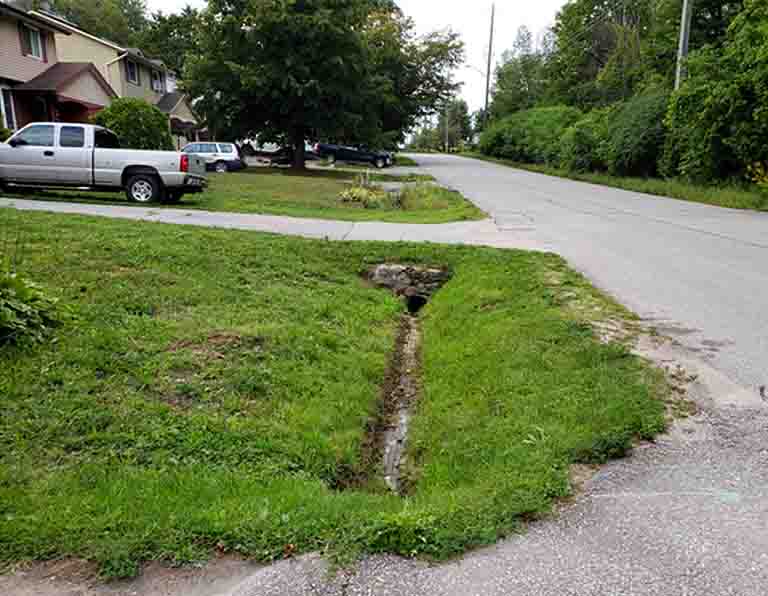
Some storm-water management practices, such as storm sewers and concrete channels, may be effective in handling runoff, but they’re ultimately eyesores. Bioswales offer a more pleasing alternative. They add aesthetic appeal to a residential or commercial site with texture, colour and habitat for birds and butterflies.
During seasonal shifts, city sewer and storm-water systems can struggle to keep up with increased water runoff. A 4 meter bioswale can absorb about a quarter of the total rainfall runoff that it receives.
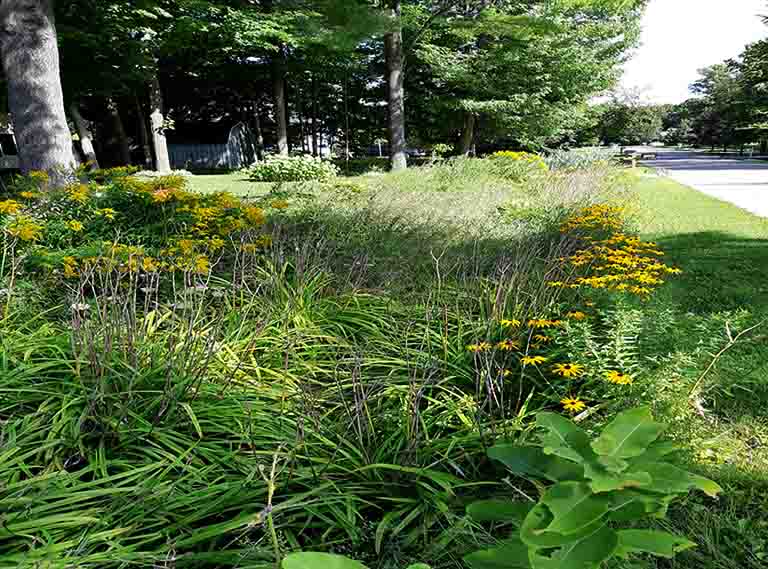
Once established, a bioswale needs little maintenance. They are vegetated with hardy native plants with established root systems which can withstand drought and a heavy downpour. While they are most effective in dealing with frequent, small rainfalls, they are also important in areas susceptible to storms. Liven up your landscape with a bioswale You’ll not only protect our lakes and reduce the load on our city infrastructure, you’ll also beautify your home. Thanks for the tip Dorthea and Jane
ATTRACT POLLINATORS TO YOUR GARDEN
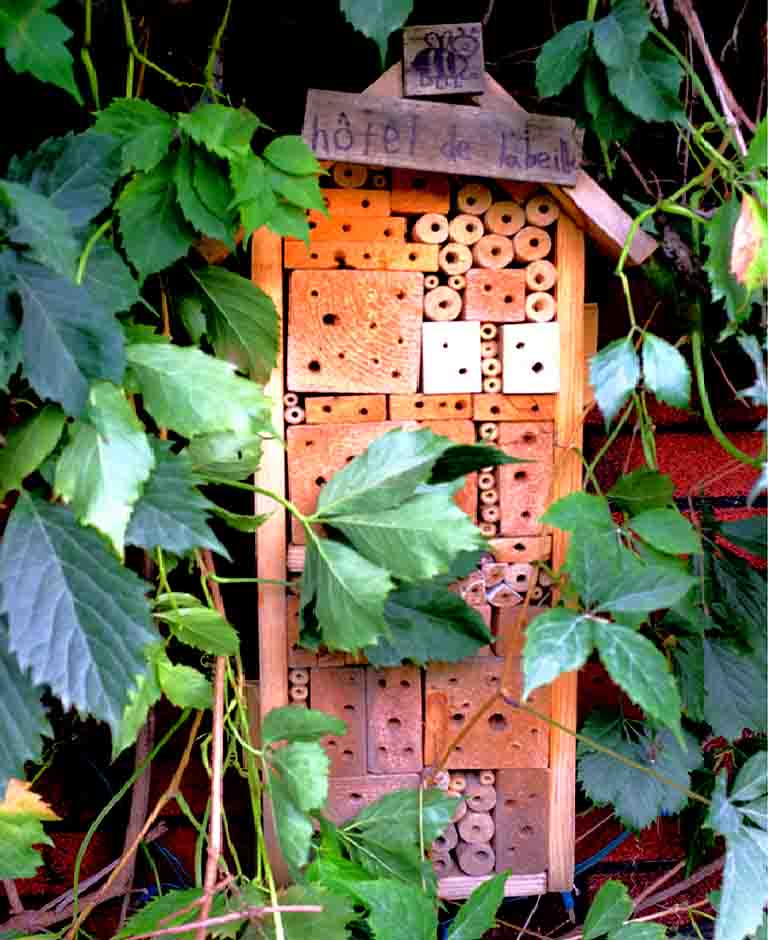
Birds, bats, bees, butterflies and beetles pollinate plants and are responsible for bringing us one out of every three bites of food. Worldwide, over half the diet of fats and oils comes from crops pollinated by these little critters. They transfer pollen grains from one flower to another, and facilitate the reproduction in 90% of the world’s flowering plants.
Pollination leads to the production of fruits we eat, and the seeds that will create more plants. Pollination begins with flowers. Gardeners can support pollinators by providing pesticide-free food sources, safe shelter, and access to clean water. Having variety in your plants and their bloom times will help attract and support pollinators. Consider planting a portion of your lawn with native wildflowers to act as a pollinator garden (you’ll save time and lawnmower gas). Butterflies such as the monarch are an important model species for ecologists when determining the health of an eco-system. Many gardeners plant milkweed in their eco-friendly gardens to attract monarchs by providing a source of food for monarch caterpillars. Another way to ensure local bees set up shop in your yard is to install a bee house or bug hotel.
JUMP ON THE BUS, GUS
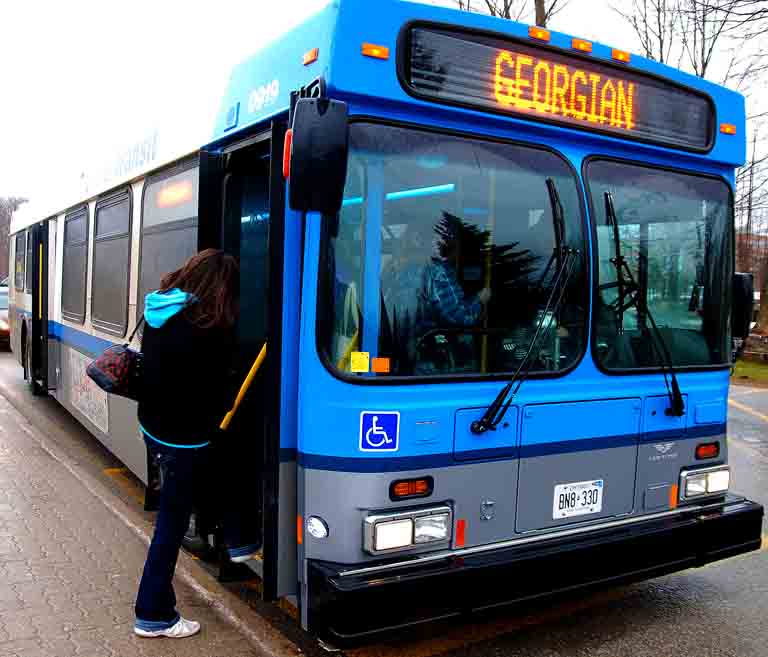
Take Orillia Transit or plan to carpool at least a couple of days a week. If possible ride your bicycle to work. Walk, even. Get some exercise—your body will thank you.
Driving to Toronto often? Take the GO bus or the GO train from Barrie instead. The new LINX bus will take you to Barrie for $4. It goes every 50 minutes between 6 am and 6 pm.
Learn how to connect with Toronto subways and buses. Leave the driving to someone else. The average family spends 20% of their family income on transportation. This means that reducing use of our cars can save us thousands of dollars each year.
Transportation is the source of 25% of our carbon emissions in Canada. So we’re saving money, but we’re also saving the planet. Let’s do it.

